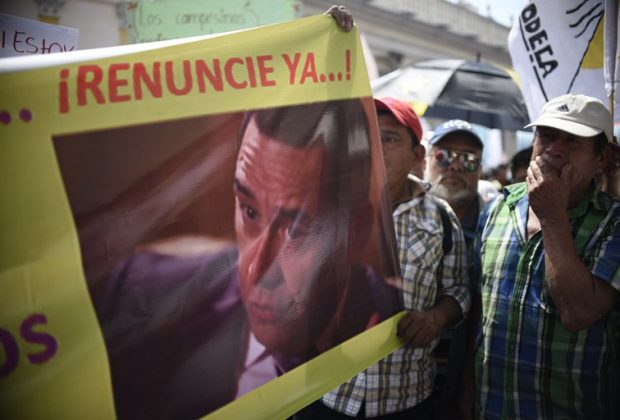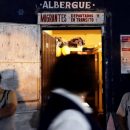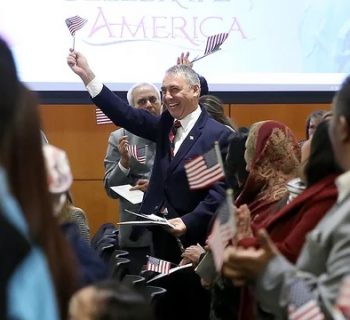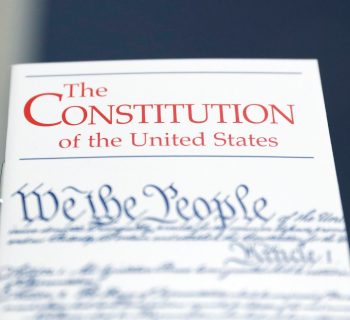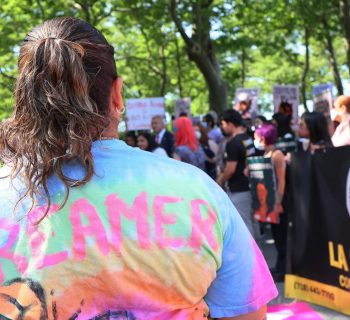It is an unprecedented time in a nation’s political history. A neophyte politician — a man famous for lowbrow TV antics who has never held political office — is vying to become president. He feeds on simmering discontent about the corruption of the political establishment and mainstream politicians. Backed by extreme right-wing elements, he makes vague promises and trumpets his lack of political experience as a reason to vote for him. His competition is a former first lady married to a left-leaning ex-president. She is an altogether polarizing figure considered by a large portion of the electorate to be deeply corrupt.
Surprising all the pundits, he rides a wave of populist anger to victory.
Sound familiar? Yes, but it is also the story of Guatemala’s 2015 presidential election. The politician is a man named Jimmy Morales, a clownish talk-show comedian who ran on the ticket of an extreme right-wing political party called the National Convergence Front. His oft-repeated campaign slogan was “Neither corrupt nor a thief.”
Support for Mr. Morales, like that for Donald Trump, was based in part on voters’ frustration with a political establishment they hold responsible for a blatantly unfair status quo. But unlike Mr. Trump, Mr. Morales won a landslide victory against his opponent, Sandra Torres, getting nearly 70 percent of the runoff vote.
At first glance, the uncanny parallels between President Morales’s and President Trump’s victories may seem mere coincidence. In many ways, the two nations could not be more distinct. Guatemala has long been one of the Western Hemisphere’s most unequal societies, and for generations the American dream has lured hundreds of thousands of Guatemalans seeking to escape poverty and insecurity.
And yet in the United States, the promise of a better future that animates the American dream — not only for poor migrants but also for American working-class families — has been in retreat for decades. Since the 1970s, the gap between rich and poor has widened inexorably. And now, the aspirations of right-wing United States lawmakers may portend even deeper and more disturbing convergences between Central American nightmares and the fading American dream.
Guatemala’s spectacular levels of inequality have been long in the making. For 100 years, a tiny oligarchic elite has fought ferociously to keep hold of the reins of power and monopolize the nation’s export economy. Through both military oppression and manipulation of a weak democratic system, it has continually beat back efforts at reform from below. As a result, today Guatemala has the 12th-highest level of income inequality in the world, with some studies indicating that 5 percent of Guatemalans own or control 85 percent of the national wealth. This elite has also labored to keep the Guatemalan state weak and incapable of interfering in its business interests. In this, it has been incredibly successful. Guatemala has one of the lowest income tax rates in the hemisphere, and some of the weakest financial, environmental and workplace oversight laws.
The consequences of the elite’s success have been dire for the rest of the country, offering a cautionary tale for those who believe that gutting public institutions could ever make for a more equitable society. Lack of funding for public education ensures that Guatemala remains one of the most illiterate countries in the Americas, and failing health care and social security systems undercut what scant social safety nets exist for the poor. Meanwhile, a sliver of a middle class clings to its precarious perch between the superwealthy superminority and a sea of abject poverty. More than 50 percent of Guatemalans live beneath the poverty line, and social mobility is virtually nonexistent, which is one reason so many poor Guatemalans risk the dangerous journey to the United States.

Protesters in New York at a “Not My President’s Day” rally in February. Credit Timothy A. Clary/Agence France-Presse — Getty Images
However, the social and economic conditions in the United States that made the American dream possible have long been eroding. Working-class wages have remained stagnant for 30 years while more and more wealth is controlled by the top 1 percent, putting income inequality in the United States at its highest levels since the 1920s. Institutions that make social mobility possible, like affordable higher education, and those that protect lower-income families, like welfare programs, have undergone drastic cutbacks over the past 30 years, forcing poor families to shoulder more debt and lower their horizons. Even as the rich get richer and the poor get poorer, deepening tax breaks for the rich have ensured that they can pay a smaller percentage of their wealth into public coffers than do members of the increasingly beleaguered middle class.
And now, by accelerating the destruction of national institutions and fortifying the elite, right-wing politicians in the United States appear hellbent on restructuring American society to match ever more closely the Guatemalan blueprint. As President Trump blusters about his “big beautiful wall” to keep out poor migrants, Republican lawmakers have introduced legislation to neuter financial-oversight laws on banking, gut environmental protection standards, eliminate the Department of Education and roll back health care affordability. They call for further easing of the tax burden on the rich and major corporate tax cuts to make the United States more competitive in the global race to the bottom.
The United States is still a beacon for Central Americans desperate for a better life. Last July, I spoke with a 20-year-old Guatemalan man named Wilmer who was traveling through Mexico and looking to cross into the United States. “For poor people like me, my country is like a cage with no way out,” Wilmer said as he waited with dozens of other Central Americans to hop a northbound freight train. “And we all know that this journey is dangerous. We might fail, we might even die. But at least there’s some hope at the end of it.”
For now, the American dream is alive and kicking. How terrifying, though, to imagine a future in which the hope that the United States has come to represent for poor Central Americans is extinguished, not because of some “big beautiful wall” but because entrenched inequality has made it a monstrous doppelgänger of their own societies.

